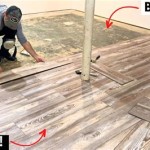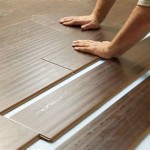Laminate Wood Flooring Installation Near Me: A Comprehensive Guide
The decision to install new flooring in a home or business is a significant one, often involving considerations of aesthetics, durability, cost, and ease of maintenance. Laminate wood flooring has emerged as a popular choice for many due to its realistic wood appearance, affordability, and straightforward installation process. When contemplating a laminate wood flooring installation, finding qualified professionals in the vicinity becomes crucial for a smooth and successful outcome. This article provides a detailed overview of laminate wood flooring installation, covering key aspects from preparation to professional considerations.
Understanding Laminate Wood Flooring
Laminate flooring is a multi-layer synthetic flooring product fused together through a lamination process. It simulates wood flooring with a photographic applique layer under a clear protective layer. This construction provides a durable and scratch-resistant surface, making it suitable for high-traffic areas. The core of laminate flooring is typically composed of high-density fiberboard (HDF) or medium-density fiberboard (MDF), which provides stability and impact resistance. Understanding the composition and characteristics of laminate flooring is essential for making informed decisions regarding its suitability for a particular space.
One of the primary advantages of laminate flooring is its cost-effectiveness compared to solid hardwood or engineered wood flooring. The manufacturing process is less resource-intensive, and the materials used are generally more affordable. This translates to lower overall costs for the consumer, making laminate flooring an attractive option for budget-conscious homeowners. Additionally, laminate flooring is relatively easy to maintain, requiring only regular sweeping and occasional damp mopping. Its resistance to staining and fading further contributes to its long-term appeal.
However, it is important to acknowledge the limitations of laminate flooring. While advancements in manufacturing have significantly improved the realism of laminate flooring, it still lacks the natural warmth and texture of real wood. Laminate flooring is also more susceptible to water damage than some other flooring options, so it is not recommended for areas with high moisture levels, such as bathrooms or laundry rooms. Furthermore, while durable, laminate flooring can be damaged by heavy impacts or sharp objects. Understanding these limitations is crucial for making an informed decision about whether laminate flooring is the right choice for a specific application.
Preparing for Laminate Wood Flooring Installation
Proper preparation is paramount to a successful laminate wood flooring installation. This process involves several key steps, including subfloor assessment and preparation, acclimation of the laminate flooring, and gathering the necessary tools and materials. Neglecting any of these steps can lead to problems such as uneven flooring, buckling, or premature wear and tear.
The subfloor, which is the surface upon which the laminate flooring will be installed, must be clean, dry, and level. Any imperfections in the subfloor, such as cracks, holes, or unevenness, must be addressed before installation begins. Small cracks can be filled with patching compound, while larger imperfections may require the application of a self-leveling compound. In some cases, it may be necessary to replace sections of the subfloor entirely. Ensuring a smooth and level subfloor is essential for a professional-looking and long-lasting installation.
Acclimation is the process of allowing the laminate flooring to adjust to the temperature and humidity of the room in which it will be installed. This typically involves storing the unopened boxes of flooring in the room for several days before installation. Acclimation helps to prevent expansion and contraction of the flooring after installation, which can lead to buckling or gaps. The specific acclimation period will vary depending on the manufacturer's recommendations and the prevailing environmental conditions.
Gathering the necessary tools and materials is another essential aspect of preparation. This typically includes a tape measure, pencil, utility knife, tapping block, pull bar, spacers, and a saw (either a hand saw or a power saw). A moisture meter is also recommended to ensure that the subfloor is sufficiently dry before installation. Having all the necessary tools and materials on hand will streamline the installation process and help to ensure a professional outcome.
Finding and Evaluating Local Installation Professionals
While DIY laminate flooring installation is possible, hiring a professional installer offers several advantages. Professional installers possess the experience, expertise, and specialized tools necessary to ensure a high-quality installation. They can also handle complex situations, such as installing flooring around obstacles or dealing with challenging subfloor conditions. Finding and evaluating local installation professionals is therefore an important step in the overall process.
Several resources can be used to find local laminate wood flooring installers. Online directories, such as Yelp, Angie's List, and HomeAdvisor, provide listings of local contractors along with customer reviews and ratings. These reviews can provide valuable insights into the quality of work, customer service, and pricing of different installers. Referrals from friends, family, or neighbors can also be a reliable source of information. Local flooring retailers may also offer installation services or be able to recommend qualified installers.
Once a list of potential installers has been compiled, it is important to evaluate their qualifications and experience. Requesting references from previous clients is a good way to assess the installer's track record. Checking for licenses and insurance is also essential to ensure that the installer is operating legally and has adequate coverage in case of accidents or damage. Asking about the installer's experience with laminate wood flooring specifically is important, as experience with other types of flooring may not translate to expertise in laminate installation.
Obtaining multiple quotes from different installers is also recommended. This allows for a comparison of pricing and services. It is important to ensure that the quotes are detailed and include all costs, such as labor, materials, and any additional services, such as subfloor preparation or removal of old flooring. Choosing the installer with the lowest price is not always the best approach. It is important to weigh the cost against the installer's qualifications, experience, and reputation. A slightly higher price may be worth it for a more experienced and reliable installer.
Key Considerations During the Installation Process
Even when hiring a professional installer, it is beneficial to have a basic understanding of the installation process. This allows for informed communication with the installer and ensures that the installation is proceeding according to expectations. Several key considerations should be kept in mind during the installation process.
Proper spacing is essential for allowing for expansion and contraction of the flooring. Spacers should be placed around the perimeter of the room during installation to maintain a consistent gap between the flooring and the walls. This gap allows the flooring to expand and contract without putting pressure on the walls, which can lead to buckling or cracking. The manufacturer's recommendations should be followed regarding the size of the expansion gap.
Staggered seams are crucial for creating a visually appealing and structurally sound floor. The seams between the planks should be staggered randomly to avoid creating long, continuous lines. This helps to distribute the weight evenly and prevents the flooring from shifting or separating over time. The manufacturer's recommendations should be followed regarding the minimum length of the planks and the amount of stagger required.
Proper cutting techniques are essential for achieving a professional-looking installation. Clean, precise cuts are necessary to ensure that the planks fit snugly together and that there are no gaps or overlaps. A sharp utility knife or a power saw with a fine-tooth blade should be used for cutting the planks. When cutting around obstacles, such as pipes or door frames, a jigsaw or coping saw may be necessary.
Attention to detail is also crucial for a successful installation. This includes properly aligning the planks, ensuring that the seams are tight, and cleaning up any excess adhesive or debris. Taking the time to pay attention to these details will result in a more professional-looking and long-lasting floor.
After Installation: Maintenance and Care
Once the laminate wood flooring has been installed, proper maintenance and care are essential for preserving its appearance and extending its lifespan. Regular cleaning and preventative measures can help to protect the flooring from damage and keep it looking its best.
Regular sweeping or vacuuming is essential for removing dirt, dust, and debris that can scratch or damage the surface of the flooring. A soft-bristle brush or a vacuum cleaner with a felt brush attachment should be used to avoid scratching the flooring. Avoid using vacuum cleaners with beater bars, as these can damage the surface of the flooring.
Damp mopping should be done on an as-needed basis to remove spills and stains. A damp mop with a mild detergent specifically designed for laminate flooring should be used. Avoid using excessive water, as this can seep into the seams and damage the core of the flooring. Always wring out the mop thoroughly before mopping the floor.
Preventative measures can also help to protect the laminate flooring from damage. Placing mats at entrances can help to trap dirt and debris before they are tracked onto the flooring. Using furniture pads under the legs of furniture can prevent scratches and dents. Avoiding wearing shoes with high heels or sharp objects on the flooring can also help to prevent damage.
Addressing spills promptly is essential for preventing stains and water damage. Spills should be wiped up immediately with a clean, dry cloth. Stubborn stains can be removed with a mild detergent or a laminate floor cleaner. Avoid using abrasive cleaners or harsh chemicals, as these can damage the surface of the flooring.
Long-Term Benefits of Professional Installation
While DIY installation may seem appealing, the long-term benefits of professional laminate wood flooring installation often outweigh the initial cost savings. A professional installer brings expertise, experience, and specialized tools to the job, ensuring a high-quality installation that minimizes the risk of future problems. Investing in professional installation can protect the investment in laminate flooring and provide peace of mind.
One of the primary benefits of professional installation is the assurance of a properly prepared subfloor. Professional installers have the knowledge and equipment necessary to assess the subfloor and make any necessary repairs or leveling adjustments. This is crucial for ensuring a smooth and even surface for the laminate flooring, which can prevent problems such as buckling or uneven wear.
Professional installers also have the experience and expertise to handle complex installation situations, such as installing flooring around obstacles or dealing with challenging room layouts. They can accurately measure and cut the flooring to fit seamlessly around pipes, door frames, and other fixtures. They can also create custom designs or patterns to enhance the aesthetic appeal of the flooring.
Furthermore, professional installers typically offer warranties on their work, providing protection against defects in workmanship. If any problems arise after the installation, the installer will be responsible for making repairs or replacements. This can save significant time and money in the long run, as DIY installations are often not covered by any warranty.
In conclusion, when considering laminate wood flooring installation, thorough preparation, careful consideration of installation professionals, and adherence to proper maintenance practices are crucial for achieving a successful and long-lasting result. While DIY options exist, the benefits of professional installation often outweigh the costs, ensuring a high-quality outcome and peace of mind.

Laminate Flooring Installation Lowe S

Cost To Install Laminate Floors The Home Depot

Hardwood Flooring Installation Lowe S

How To Install Laminate Flooring For Beginners

6 Steps For Installing Laminate Flooring The Home Depot

The Cost To Install Laminate Flooring In 2025 Nerdwallet

Installing Laminate Flooring For Beginners Full Diy Guide

How To Install Lock Engineered Hardwood Flooring

Easy Hdf Laminate Flooring Installation Steps Surya

Hardwood Vinyl Laminate Flooring Lumber Liquidators
Related Posts








